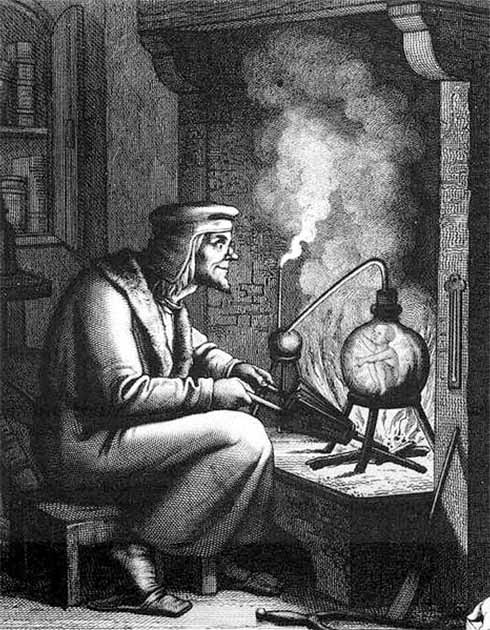The question of how to create life does not just go back to Mary Shelley’s Frankenstein, when the eponymous character used forbidden science to create life. Medieval scientists tried for centuries to create miniature artificial people using human semen mixed with other substances and implanted in an animal womb!
The homunculus is first referred to in alchemical writings of the 16 th century. It is likely, however, that this concept is older than these writings. The idea that miniature fully-formed people can be created has been traced to the early Middle Ages (400 to 1000 AD), and is partly based on the Aristotelian belief that the sperm is greater than the ovum in its contribution to the production of offspring.

The homunculus is a diminutive humanoid creature believed to be created through magical alchemical means. 19th century engraving of Homunculus from Goethe’s Faust part II ( public domain ).
The first known account of the production of the homunculus is said to be found in an undated Arabic work called the Book of the Cow , purportedly written by the Greek philosopher Plato himself.
The materials required for the creation of the homunculus include human semen, a cow or ewe and animal blood, whilst the process includes the artificial insemination of the cow / ewe, smearing the inseminated animal’s genitals with the blood of another animal, and feeding it exclusively on the blood of another animal.
The pregnant animal would eventually give birth to an unformed substance, which would then be places in a powder made of ground sunstone (a mystical phosphorescent elixir), sulphur, magnet, green tutia (a sulphate of iron) and the sap of a white willow. When the blob starts growing human skin, it would be required to be placed in a large glass or lead container for three days. After that, it has to be fed with the blood of its decapitated mother for seven days before becoming a fully-formed homunculus.
The 16 th century alchemist, Philip von Hohenheim, known also as Paracelsus, provides a different recipe for creating the homunculus in his work, De Natura Rerum . This recipe uses a horse as the surrogate mother of the homunculus, and the semen of a man is left inside the animal’s womb to putrefy for forty days, before a little man is born.
Rather than using the homunculus to obtain supernatural powers as some scientists hoped, Paracelsus said the homunculus ought to be “educated with the greatest care and zeal, until it grows up and begins to display intelligence.” Paracelsus also claims that the procedure for making the homunculus is one of the greatest secrets revealed by God to mortals, perhaps suggesting that the creation of artificial life is divine wisdom that may be used by human beings.
Read more: Alchemical Recipe for a Homunculus: Sperm + Rotting Meat = Mini Artificial Human
Top image: Medieval alchemists believed they could create a mini artificial human. Source: lidiia / Adobe Stock
By Caleb Strom and Wu Mingren
 RSS Feed
RSS Feed















 September 19th, 2022
September 19th, 2022  Awake Goy
Awake Goy  Posted in
Posted in  Tags:
Tags: 













